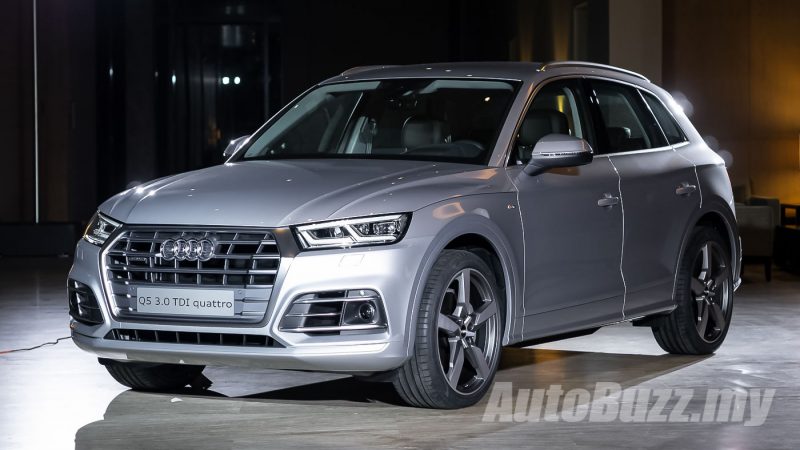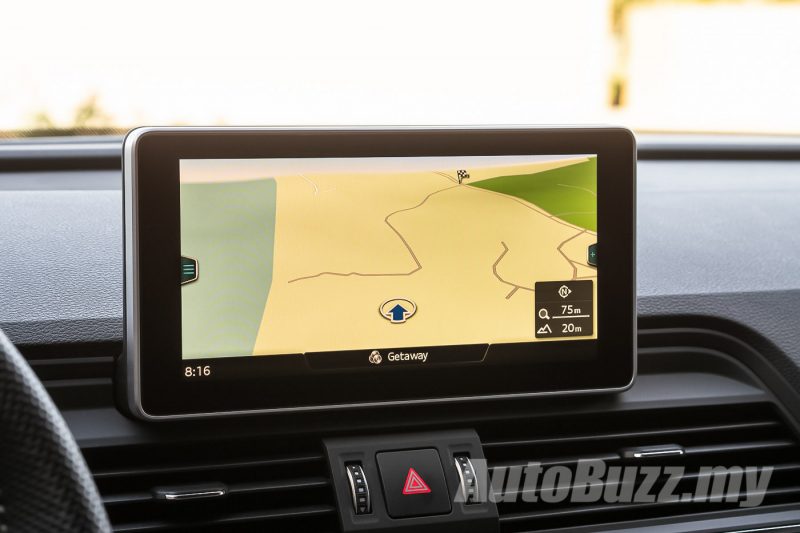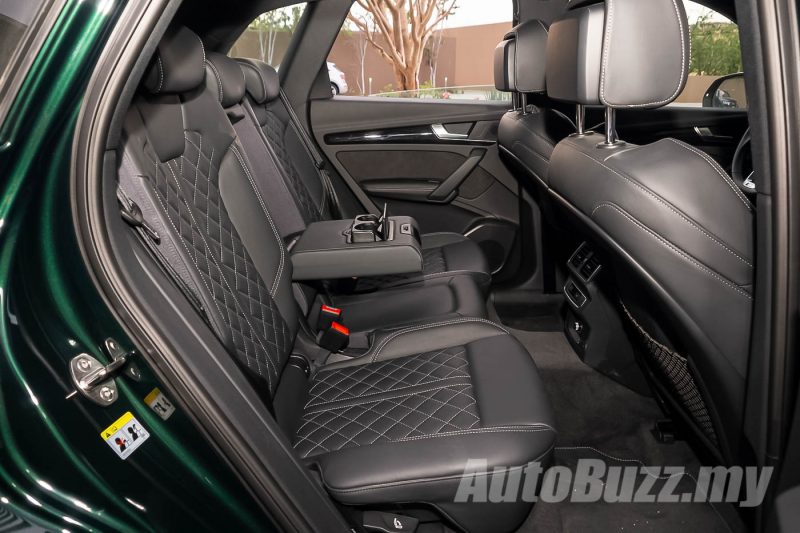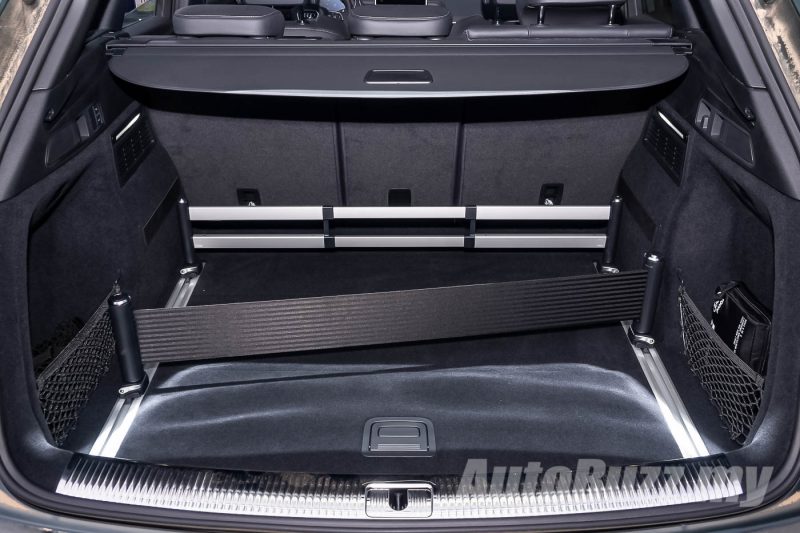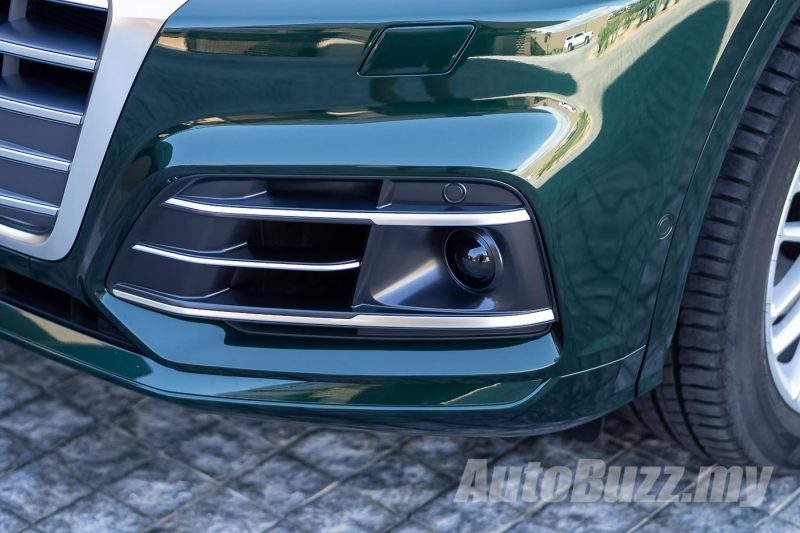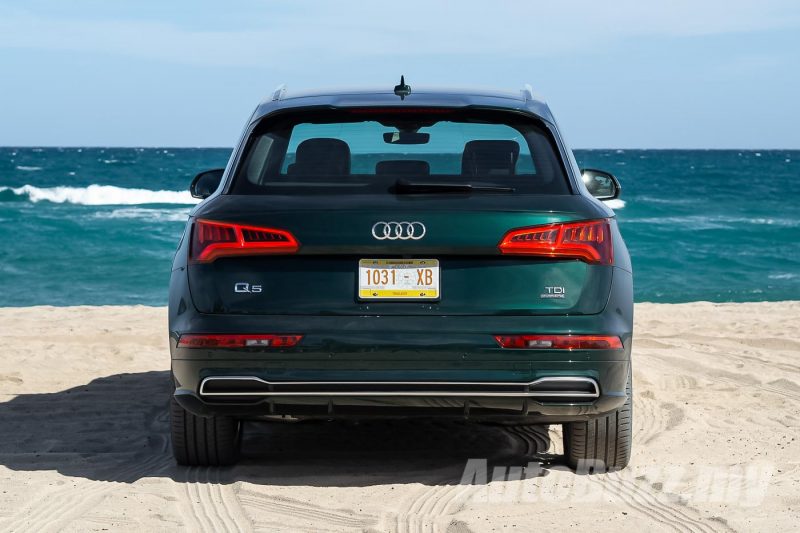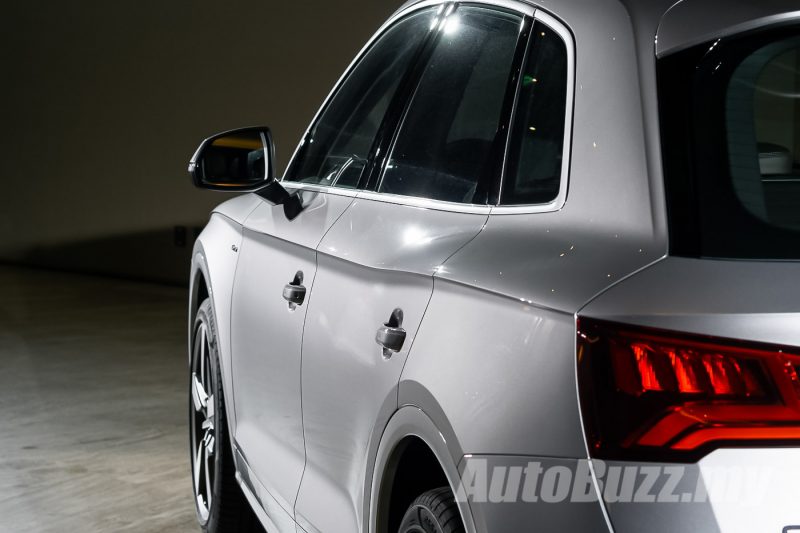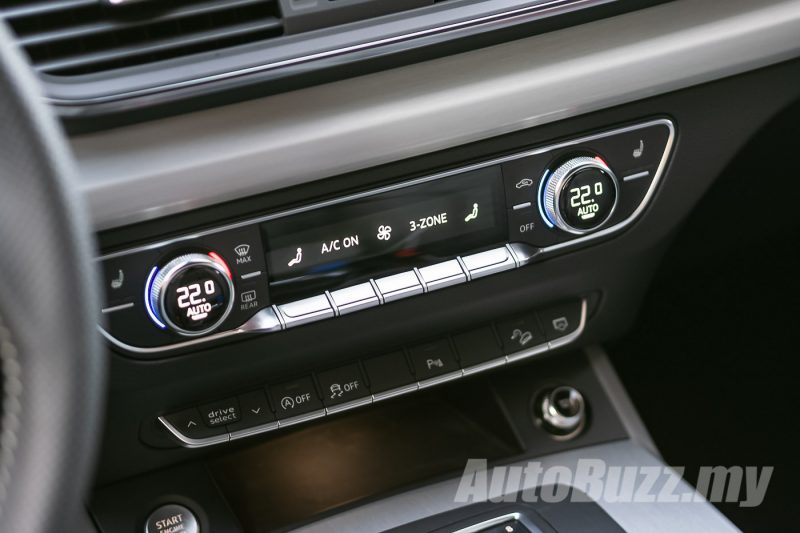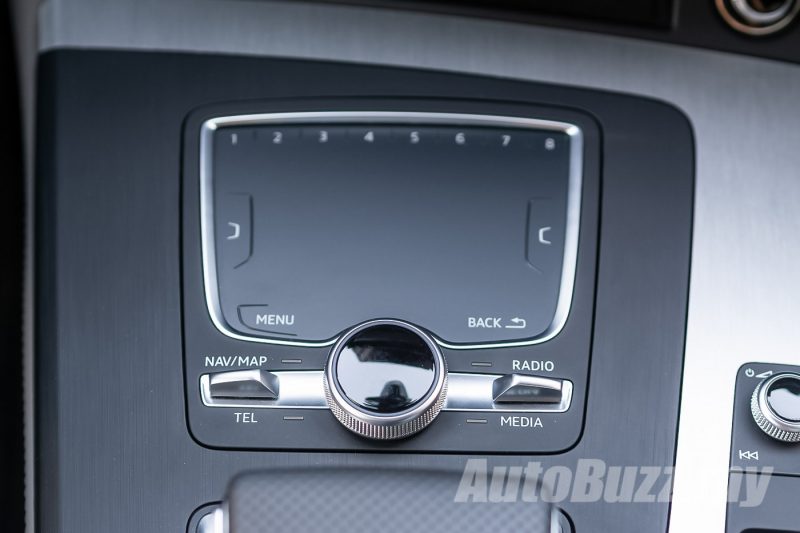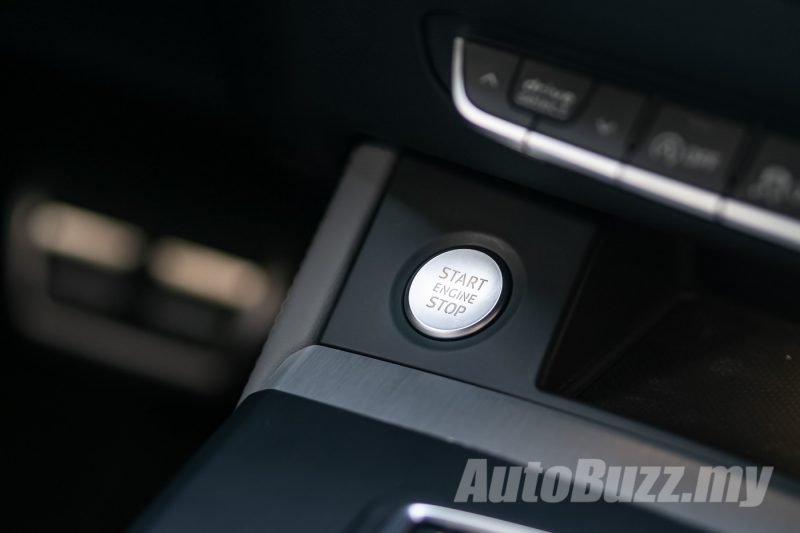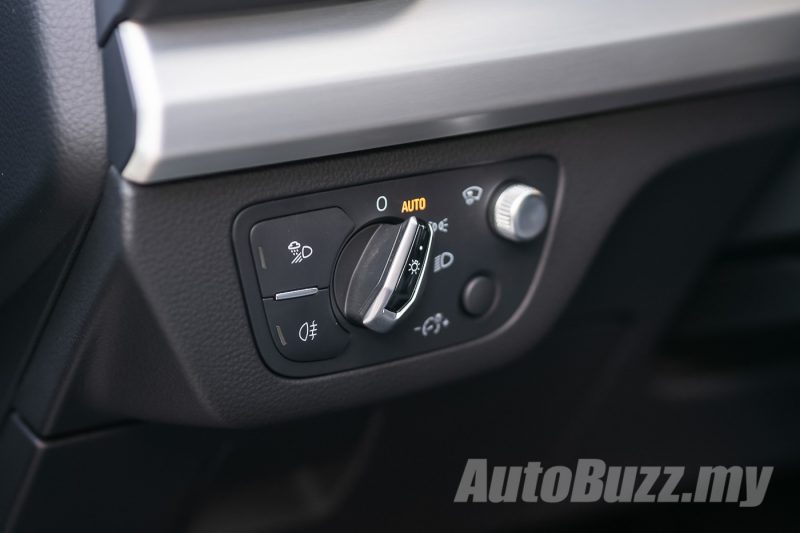As one of Audi’s most popular models, the new Audi Q5 has huge shoes to fill, more so when the preceding model went on to find over 1.6 million homes across the world.
It’s got a good head start though, sharing the mighty impressive MLB Evo platform that currently underpins the A4 B9 and Q7. That makes it larger and longer than the model it replaces, yet weight is down by as much as 90 kg. There’s no denying that it looks a lot like the older model, but expect that to change in the upcoming facelift exercise.
Beyond skin deep, the actual overhaul is in the mechanics and the cabin. Those acquainted with the new A4 will instantly find the interior design familiar, with the only differences being the air-con vents, steering wheel, dashboard and centre console layout. Elsewhere, it’s pretty much a carryover, but that’s no bad thing because the cabin is solidly built.
Our test units came fitted with the richly acclaimed 12.3-inch Audi virtual cockpit, and despite the proliferating adoption of such technology among other makes, Audi still impresses the most. The digital 1,440 x 540 pixel screen is powered by Nvidia’s Tegra 3 SoC (system on a chip), one with enough computing capacity to deliver zero latency display.

What this means is there’s absolutely no flicker and ghosting regardless of its operating temperature, but the best part is this chip can be swapped for when the Tegra 4 (and beyond) arrives. This HAS to be the future of dashboard displays. Oh, did I also mention that it operates at a butter-smooth 60 frames per second? Audi Connect, which is the 8.3-inch screen affixed to the centre dash, is also powered by Nvidia.
Underneath all this ritzy Audi cabin is a brand new platform, with the axles now pushed 20 mm further apart. This makes the second-row seating evidently more spacious, but Audi played it safe by not giving the seats the length it requires for better thigh support. The touchy-feely bits are as expected of any Audi cars: high quality, generously applied and is surely in the running for class best.

Boot volume is only up by 10 litres at 550 litres, but the second-row seats can be pushed forwards, granting 60 litres more volume. With the seats folded flat, loading capacity expands to a healthy 1,550 litres. Apparently, all variants of the new Q5 will get powered tailgate as standard.
Our drive took place in the incredibly barren landscapes of Mexico’s Baja California Sur, on coarsely granulated roads much like home, only far less pockmarked. Audi readied three variants of the Q5 for us to sample – 2.0 TFSI quattro, 2.0 TDI quattro and 3.0 TDI quattro.
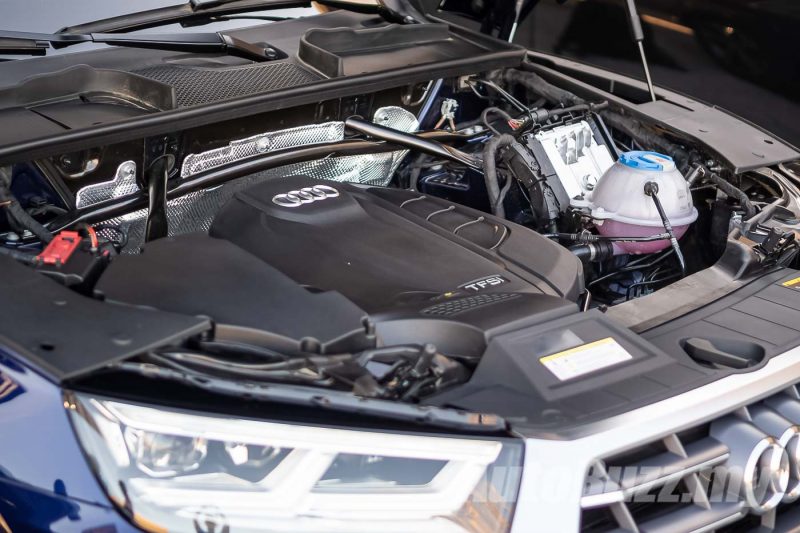
Our focus of the day is the sport 2.0 TFSI quattro (RM339,900) since it is the only one on sale here in Malaysia. Neither diesel variations will make their way here, which is unfortunate, because the 3.0 litre TDI is a beast of a unit.
Weighing just a nick under 1,800 kg, the petrol Q5 is approximately 60 kg heavier than the comparable Mercedes-Benz GLC 250 4MATIC and is five kg less than the new BMW X3 xDrive30i. However, Audi’s four-cylinder turbo packs the hardest punch here with 252 hp and 370 Nm of torque, all sent to each corner through a 7-speed dual clutch auto and quattro all-wheel drive.

On paper, the Q5 sprints from zero to 100 km/h in 6.3 seconds, which is a full second quicker than the GLC 250. Out in the real world though, the difference becomes more telling. The 90 kg weight loss means the Q5 is much nimbler in the bends and feels considerably punchier than before.
There’s no hint of lethargy from this direct injected motor, which at full whack would top out at 237 km/h – again, quicker than the GLC (223 km/h), but a tad slower than the X3 (240 km/h). What’s interesting is that the engine, when pushed, produces a mildly sporty note, so that ought to make some smile.

Unlike the GLC and X3, the Q5 is the only one of the three to get a dual-clutch transmission. However, in typical Audi fashion, the gearshifts are deliberately tuned for smoothness, though this does result in a slightly noticeable lag during gear changes. To clarify, it’s still a quick-shifting unit, just not as rapid-firing as a DSG in a Golf R.
A few standout characteristics of the dual-clutch transmission is the fact that it doesn’t jerk when creeping slowly up a slope, a marked improvement from early iterations of the gearbox. There’s no slippage as well, and there’s always enough grunt to get you going at any speed, so long as you remain within the legal limits.

Comfort, on the other hand, is considerably improved thanks to the new chassis and an upgraded five-link suspension setup for the rear (four-link previously). Ride quality is more supple than the GLC, but perhaps falling a tad short of the X3. BMW hardly gets this wrong, so to have the Q5 trail slightly behind is saying a lot for the ageing Audi.
For the longest time, Audi has been the benchmark for refinement and noise isolation (the S-Class notwithstanding). Today, the competition has kept up, some even caught up, but the Q5 continues to prove that Audi is still in the game.

When cruising in the city (circa 80 km/h), tyre roar and road noise are barely audible, while wind noise is completely nonexistent. Besides buzzing kapcais and angry honkers, there’s little noise to distract the mind. At 110 km/h, wind noise is still generally well sorted, save for the occasional side drafts. Road noise at this point becomes slightly audible.
The Q5 has been impressive thus far, to say the least. But this is where things take an ugly turn. At RM340k, it’s severely lacking in the safety department. While it may boast a five-star ANCAP crash safety rating, some may find the absence of features such as autonomous emergency braking (AEB), lane-keeping assist, collision warning (passive), and blind-spot monitoring a deal-breaker.

The consolation prize is that it has six airbags and three Isofix mounting points – one for the front passenger seat, and two for the outer rear seats. Both the GLC and X3 only have two, which as you’ve guessed, are for the outer rear seats.
To summarise, if you’re on the market for an SUV that looks distinctive, handles competently, rides comfortably and packs a decent punch, the Q5, although somewhat late to the party, is still a strong contender for your money. It’s just that, at RM340k, the “fully-imported from Mexico” argument holds no advantage over the sheer value you get with, for example, a Volvo XC60 T8 Inscription Plus.
IMAGE GALLERY
Audi Q5 2.0 TFSI quattro in Mexico



